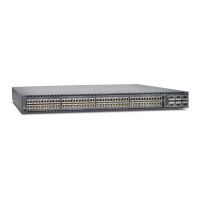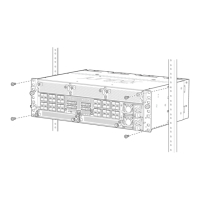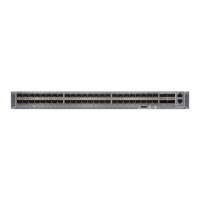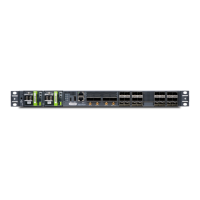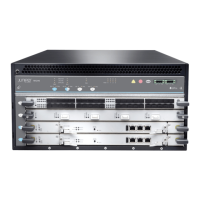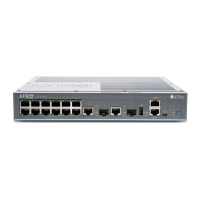must have circuit cross-connect (CCC) family encapsulation configured for the
configuration to work.
The following steps require you to navigate various levels in the configuration hierarchy.
For information about navigating the CLI, see Using the CLI Editor in Configuration Mode
in the CLI User Guide.
NOTE: Configuring policing on an ATM IMA pseudowire is not applicable on
ACX5048 and ACX5096 routers.
This topic includes the following tasks:
1.
Configuring an Input Policer on page 913
2.
Configuring the ATM IMA Interface on page 914
Configuring an Input Policer
To configure policing on an ATM IMA pseudowire:
1. Define the ATM IMA pseudowire. For information about defining the ATM IMA
pseudowire, see “Configuring Inverse Multiplexing for ATM (IMA)” on page 185.
2. In configuration mode, go to the [edit firewall] hierarchy level:
[edit]
user@host# edit firewall
3. Define the policer:
[edit firewall]
user@host# edit atm-policer atm-policer-name
The following steps describe the ATM policer options that you can configure. The
options include: atm-service, cdvt, logical-interface-policer, max-burst-size, peak-rate,
policing-action, and sustained-rate.
4. Specify the ATM service category:
[edit firewall atm-policer atm-policer-name]
user@host# set atm-service (cbr | nrt-vbr | rt-vbr | ubr)
Select one of the following service categories, depending on the policing needs of
your network: constant bit rate (cbr), nonreal-time variable bit rate (nrtvbr), real-time
variable bit rate (rtvbr), and unspecified bit rate ubr. All service categories must include
the peak-rate and cdvt statements for the configuration to work. The peak-rate
statement limits the maximum traffic allowed and the cdvt statement ensures that
the configuration functions correctly.
5. Apply limits to the traffic flow by configuring the cell delay variation tolerance (cdvt),
from 1 microsecond through 1,800,000,000 microseconds:
913Copyright © 2017, Juniper Networks, Inc.
Chapter 27: Configuring Class of Service
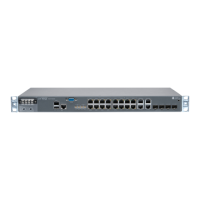
